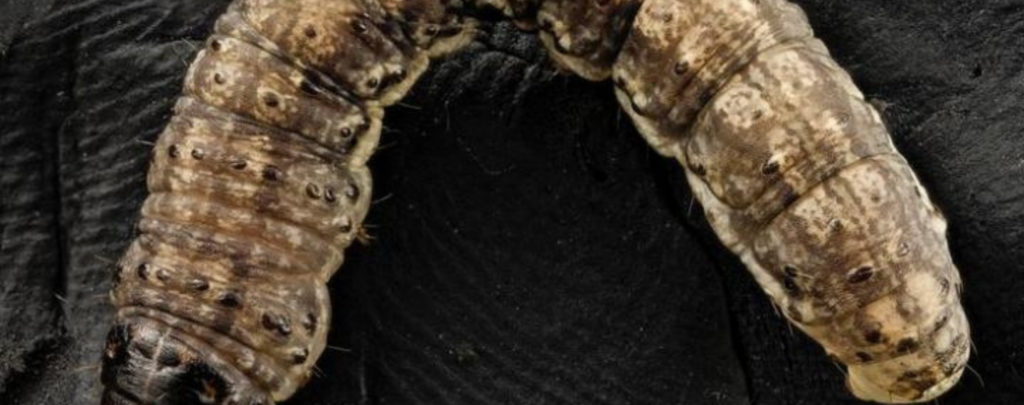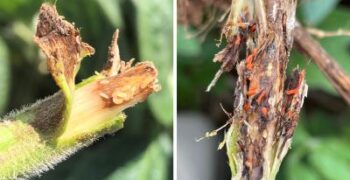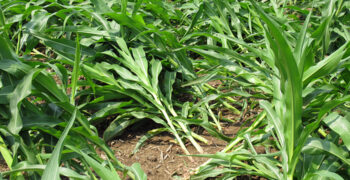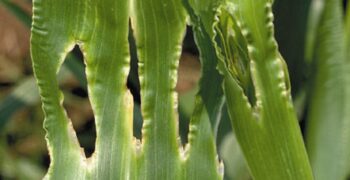Description:
There are four different types of cutworms. Black, Dingy, Glassy, Bronzed and Western. Colors of the larvae can differentiate from light grey to nearly black with coarse, granular skin texture. Smooth with little to no hairs. If this specie is disturbed it curls into a C shape. The adult cutworm migrates up from the southern states. It contains dark fore wings that appear pale near the tips. Black dagger will be seen on each forewing
Time of Attack:
April to June (stages VE-V8)
Damage:
Cutworm damage usually begins where the weedy areas are in the field. Early feeding on the plant will do minimal damage. However, this is a great indicator for possible damage being done later in the growing season by older cutworms. Larger Larvae have the capability to completely cut through the stalk and eventually reduce stand reductions.
Scouting:
Shortly after emergence walk through fields. Check for cutworms and cutworm feeding. Be sure to look for early signs of other pests and take note of them. Look at 20 different plants in 5 areas of the field for damage.
Management:
If up to 3-5% of plants show leaf feeding and 2 or more cutworms can be discovered for every 100 plants. Not every plant that shows damage will be killed. However, yield loss will be a factor depending on how each plant performed with or without feeding occurring on it.



